Corridor of death for migrants to the U.S.
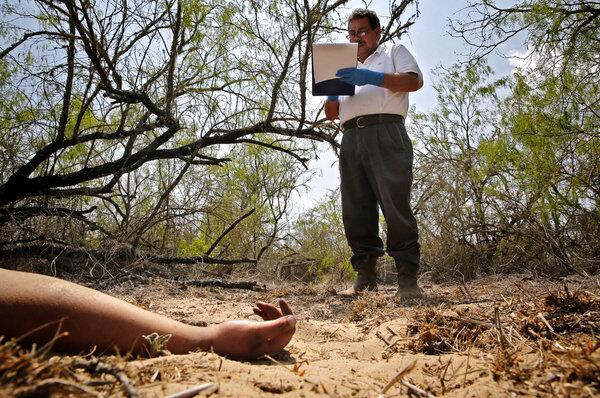
Mortuary worker Alonzo Rangel makes notes about a woman in her 20s found dead on rugged ranch land near Falfurrias, Texas, in early April. At the time, hers was the 19th body found in the heavily trafficked migrant smuggling corridor this year. (Don Bartletti / Los Angeles Times)
A deadly new migrant corridor has emerged in South Texas, where an increasing number of bodies or human remains are being found as more people try to cross into the country there instead of in Arizona or California -- 129 last year and 31 so far this year.
Read more: Border crossers face high risk in South Texas
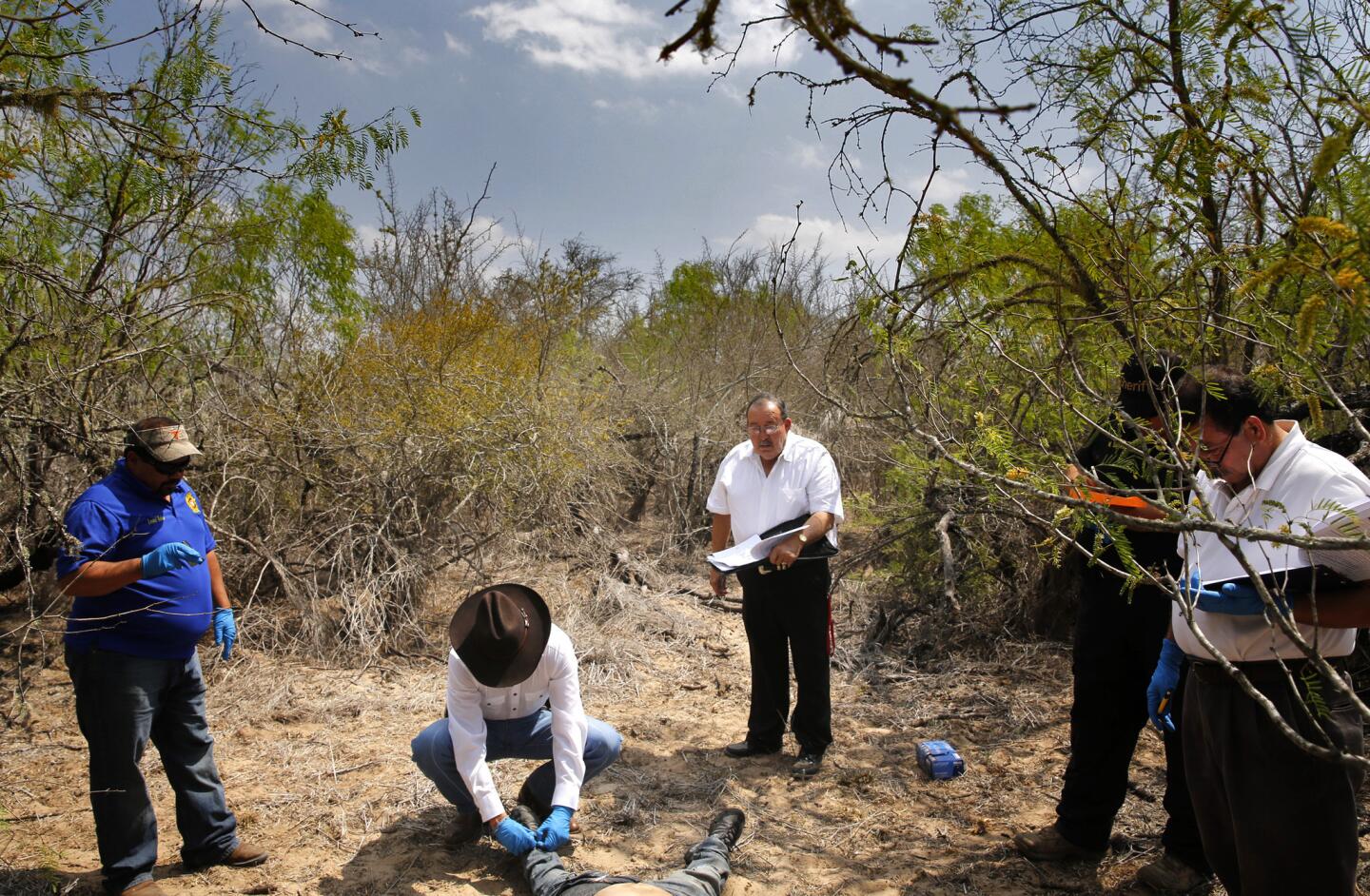
Urbino Martinez, chief deputy of the Brooks County Sheriff’s Department in South Texas, searches for ID on the woman’s body, as county Justice of the Peace Roel Villarreal, center, watches. (Don Bartletti / Los Angeles Times)
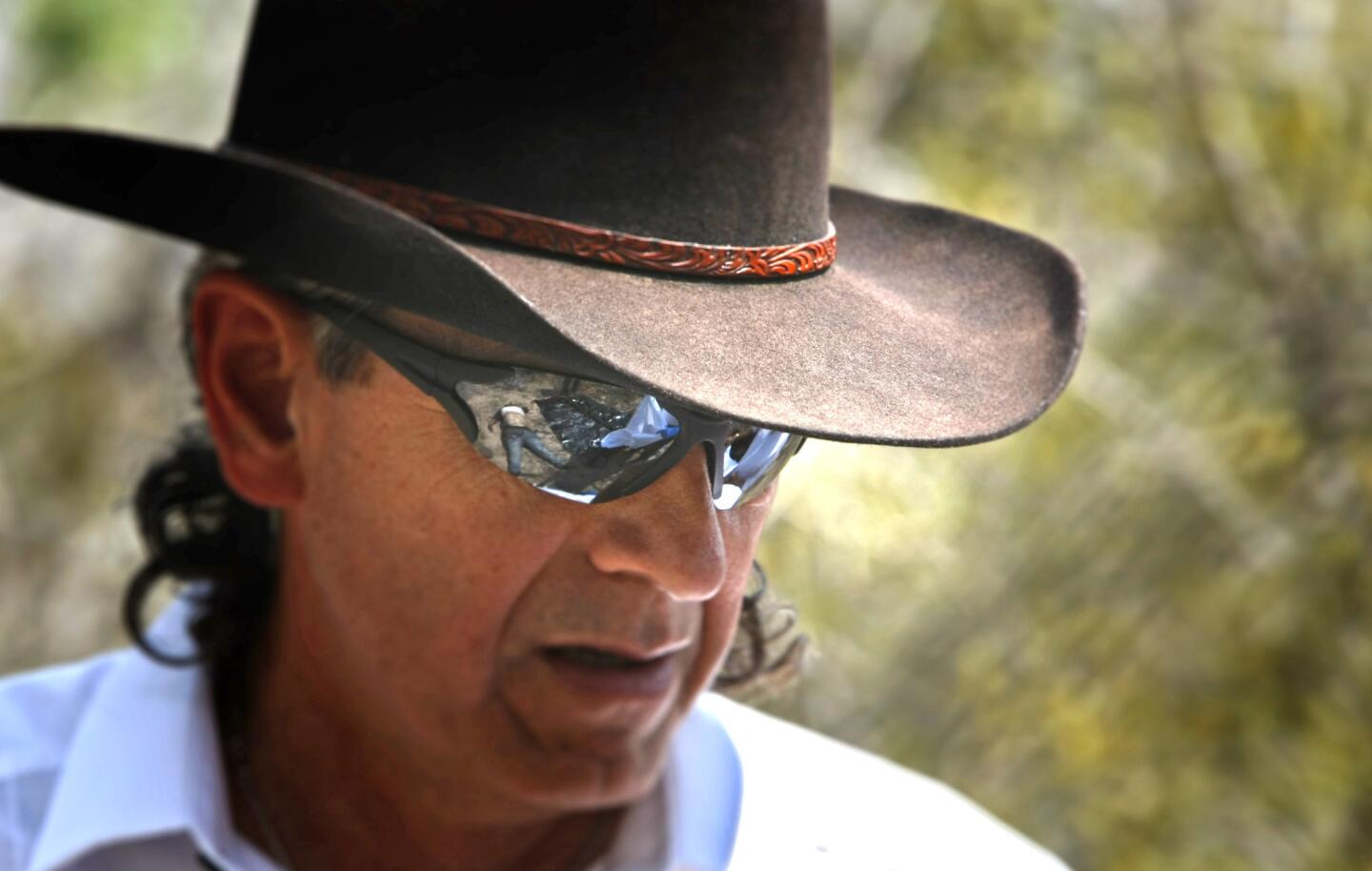
Martinez directs the recovery of the body. (Don Bartletti / Los Angeles Times)
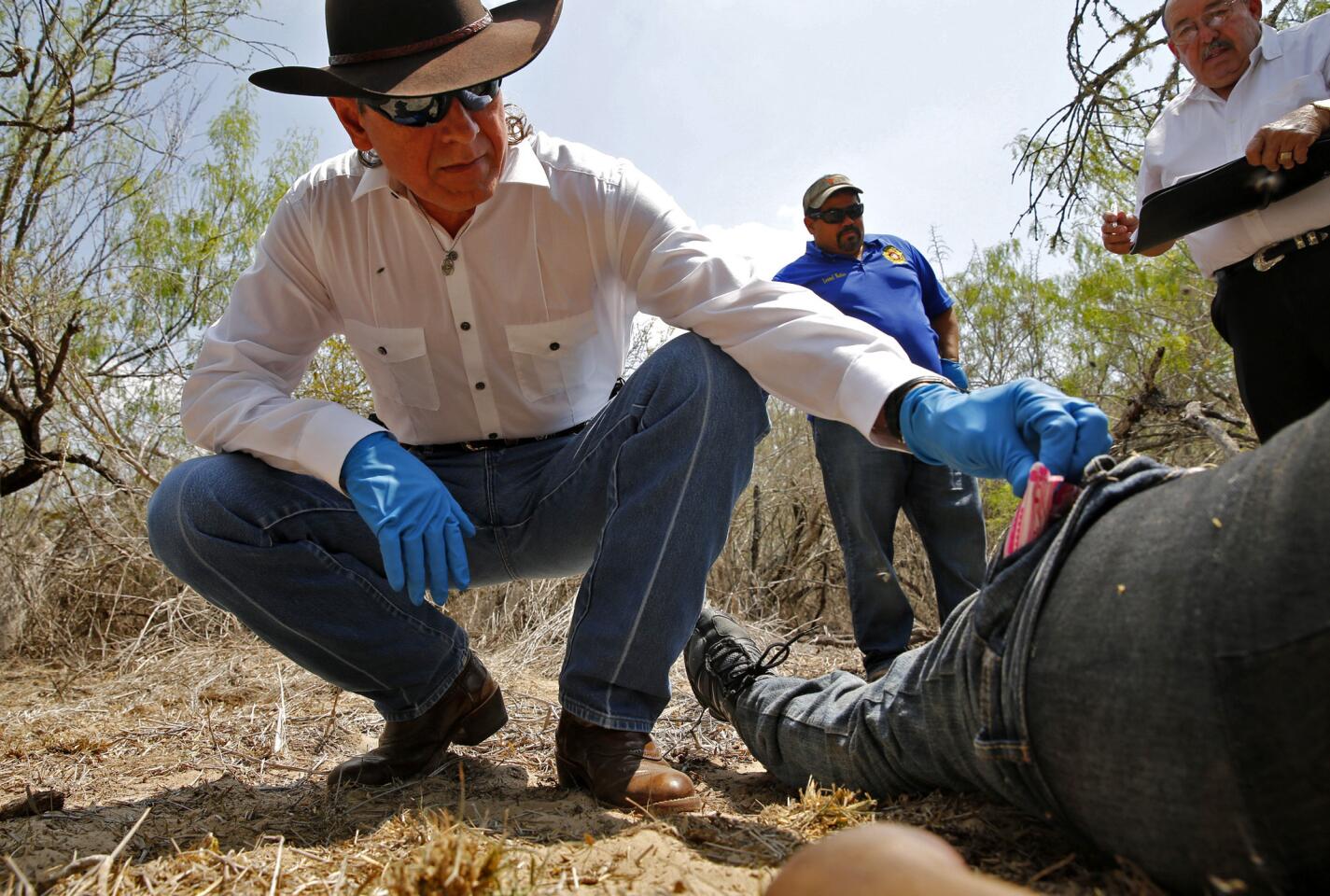
Martinez checks for an ID on the body of an apparent border crosser near Falfurrias, Texas. No ID was found on the body, but she was later determined to be a mother from Honduras. (Don Bartletti / Los Angeles Times)
Advertisement
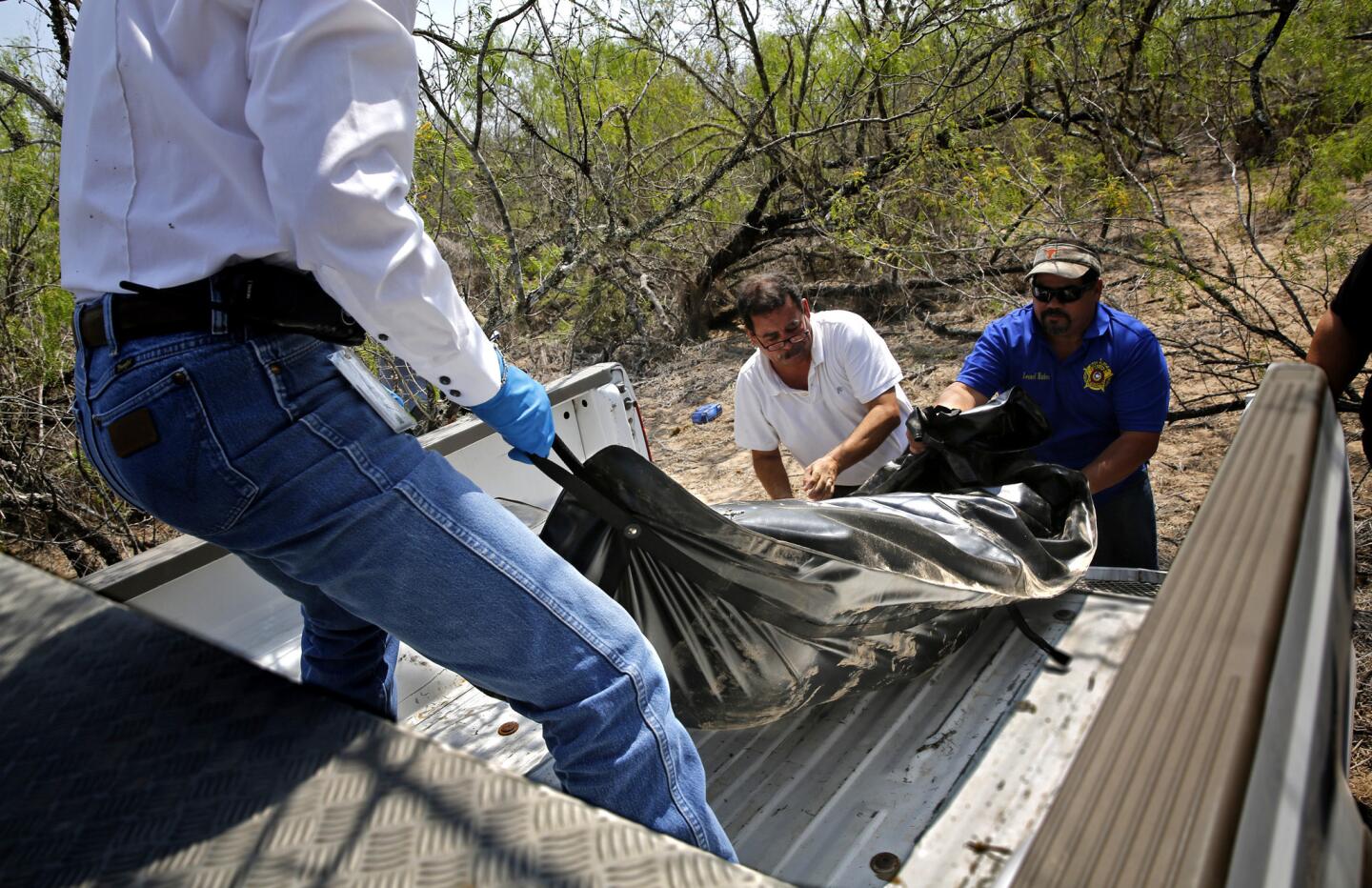
Authorities load the body onto a pickup truck. The soft sand and high temperatures make the area near Highway 281 one of the most lethal for migrants crossing north into the U.S. illegally. (Don Bartletti / Los Angeles Times)
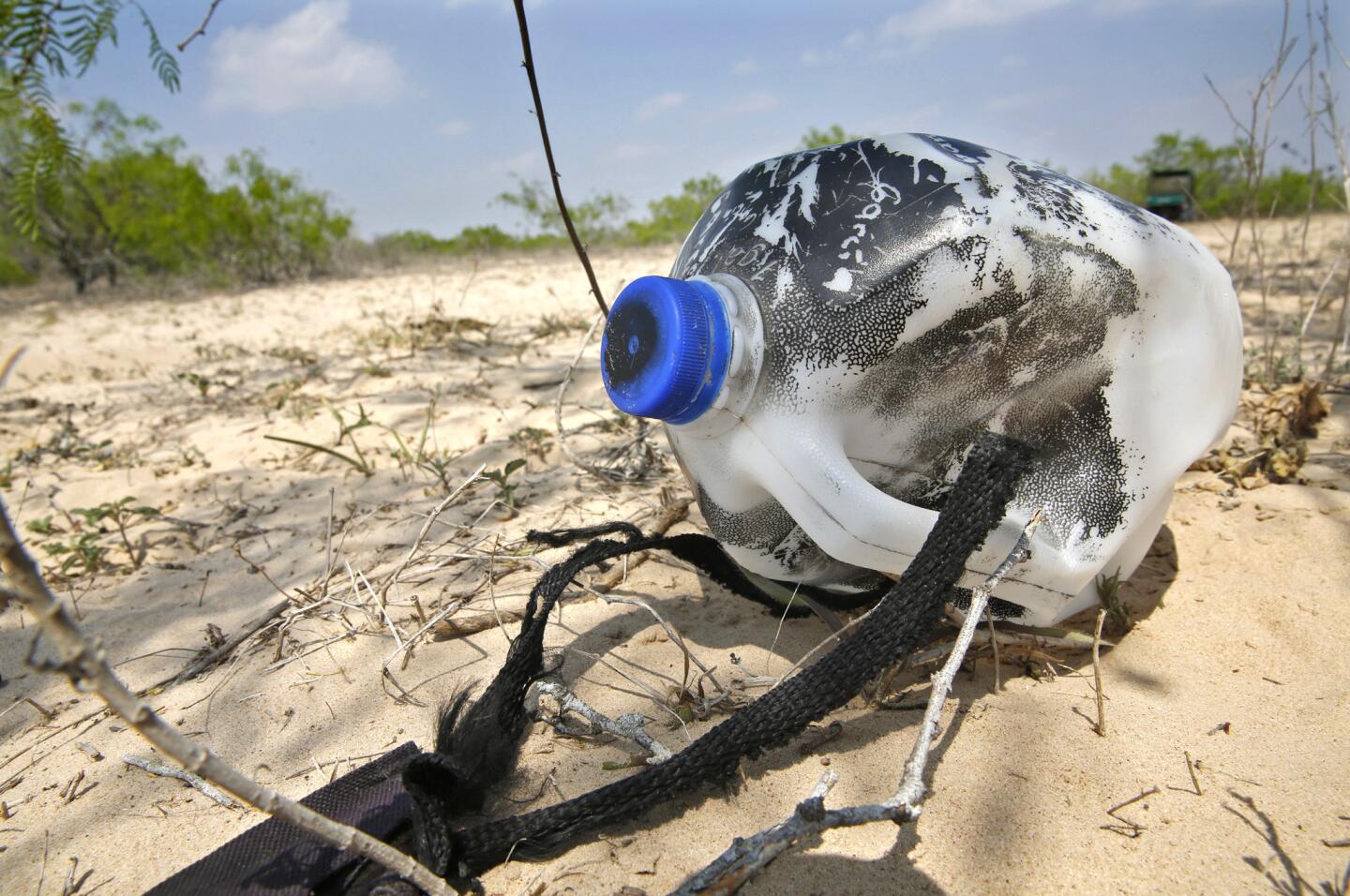
This empty plastic water jug was found near the body of the young woman. Smugglers routinely spray-paint water bottles black to try to make them less noticeable to authorities. (Don Bartletti / Los Angeles Times)
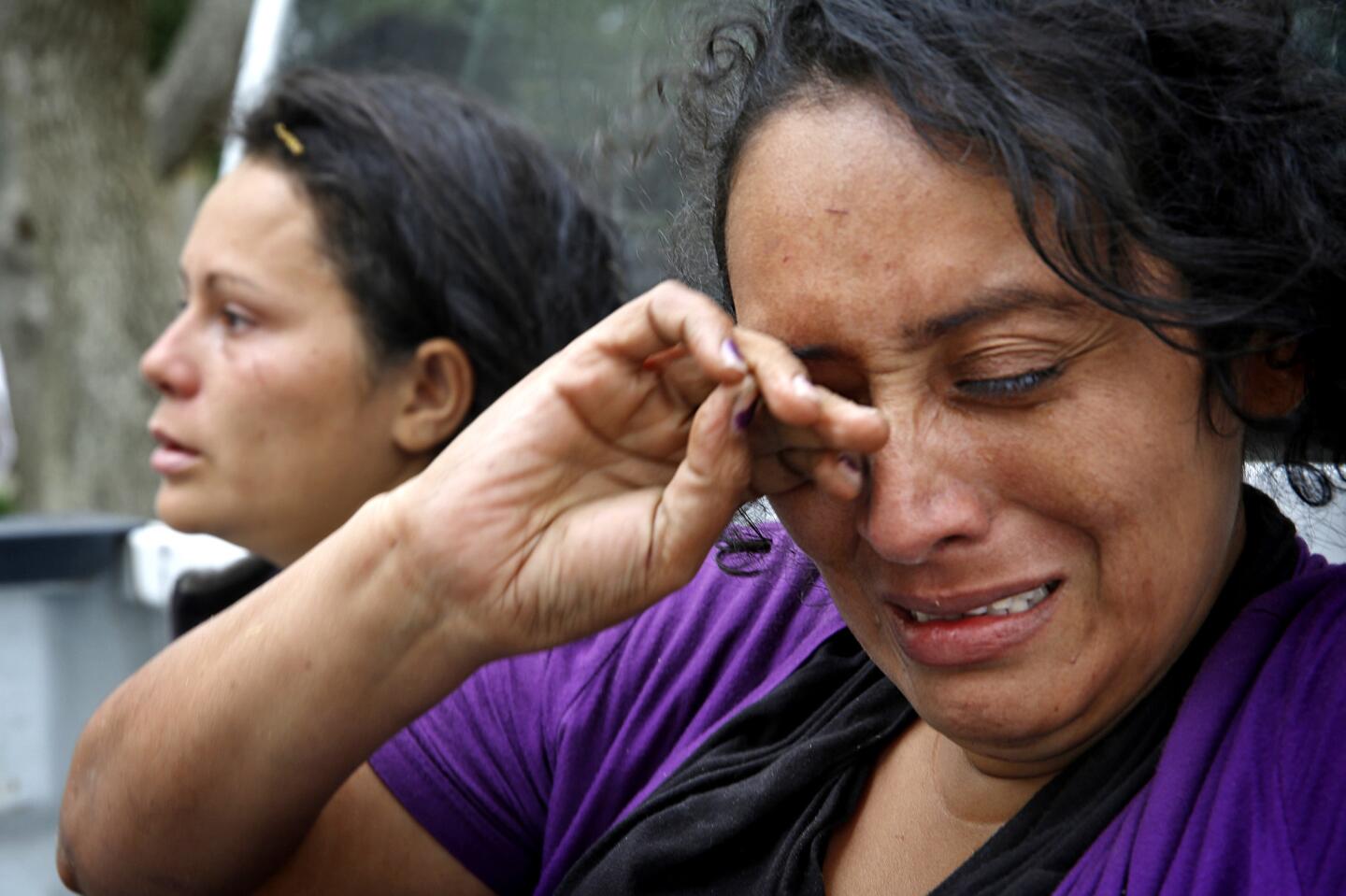
Daisy Grandes, 32, from El Salvador, sobs after being rescued on a cattle ranch near Falfurrias, Texas. She and Francis Diaz, left, 24, from Honduras, said they were lost in the area without food or water for several days, abandoned by their Mexican smuggler. Diaz said of her illegal entry into the United States: “It’s my first and my last try.” (Don Bartletti / Los Angeles Times)
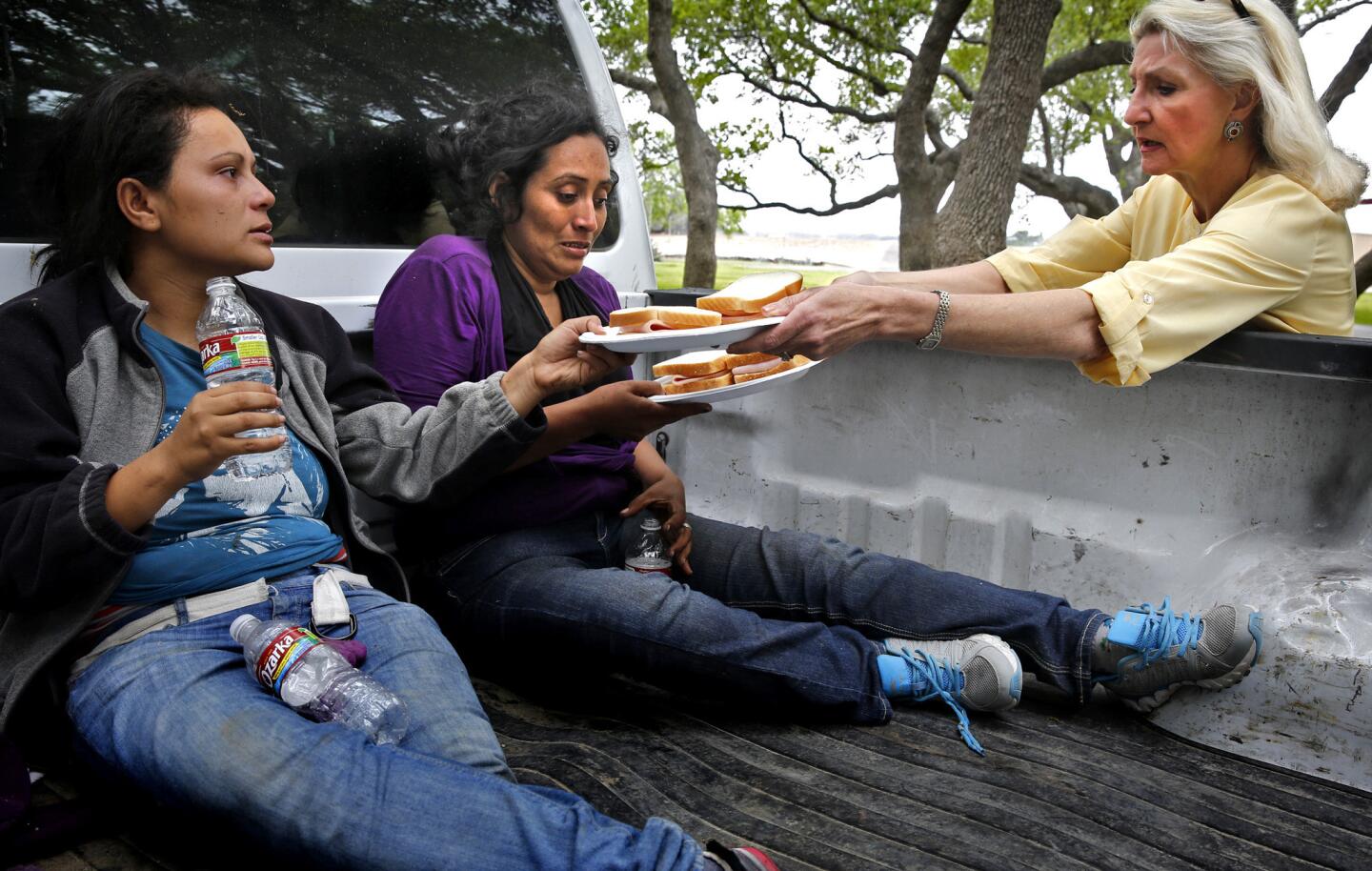
Stephanie Cage, right, owner of the ranch where they were found, offers sandwiches to the two women who had just been rescued by a ranch hand. They were among the lucky ones who survived their attempt to cross the unforgiving landscape. (Don Bartletti / Los Angeles Times)
Advertisement
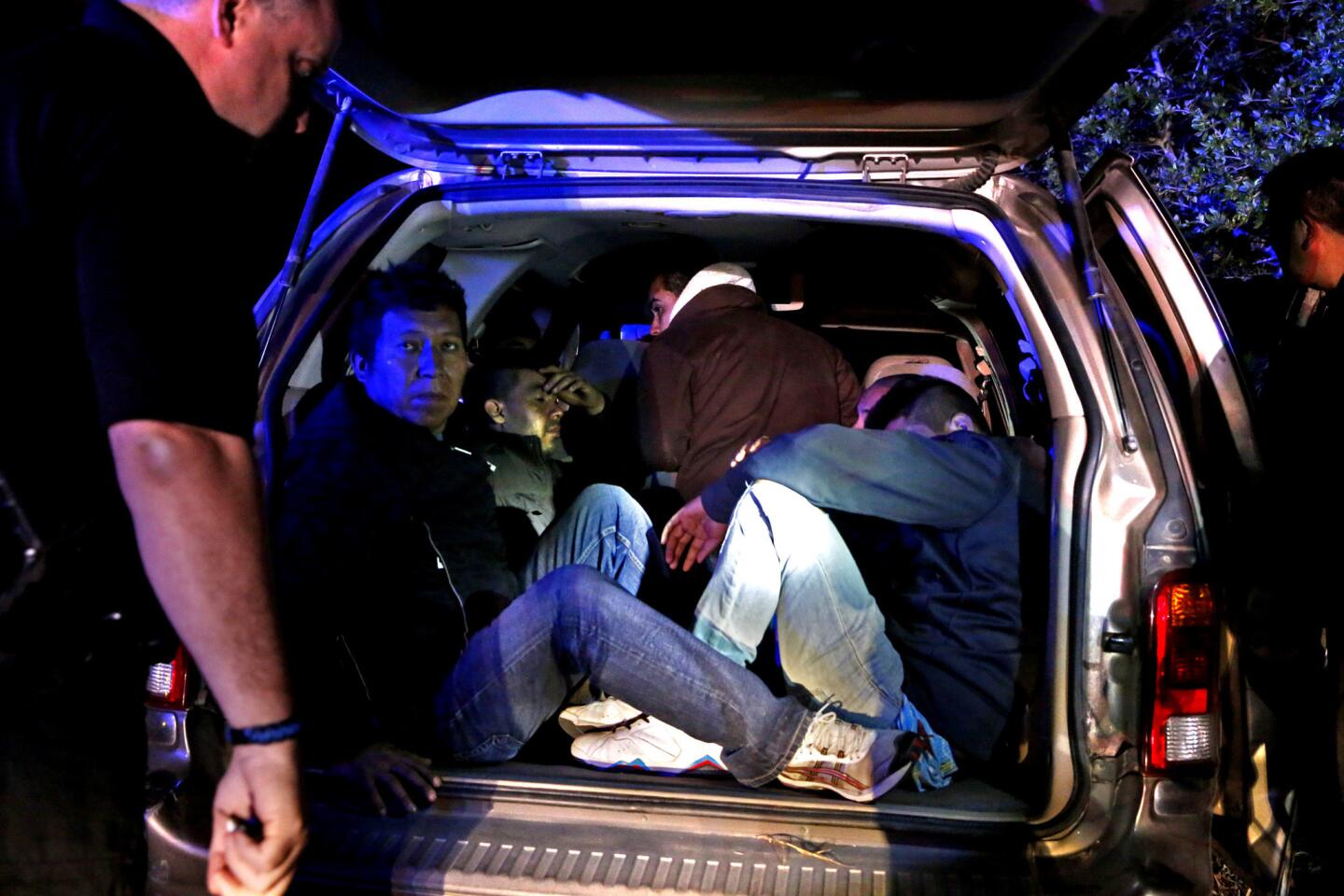
Brooks County sheriff’s deputies approach a minivan loaded with 11 Mexican migrants that they stopped on Highway 281 in Falfurrias, Texas. The smuggler who had been driving escaped into the brushy countryside. (Don Bartletti / Los Angeles Times)
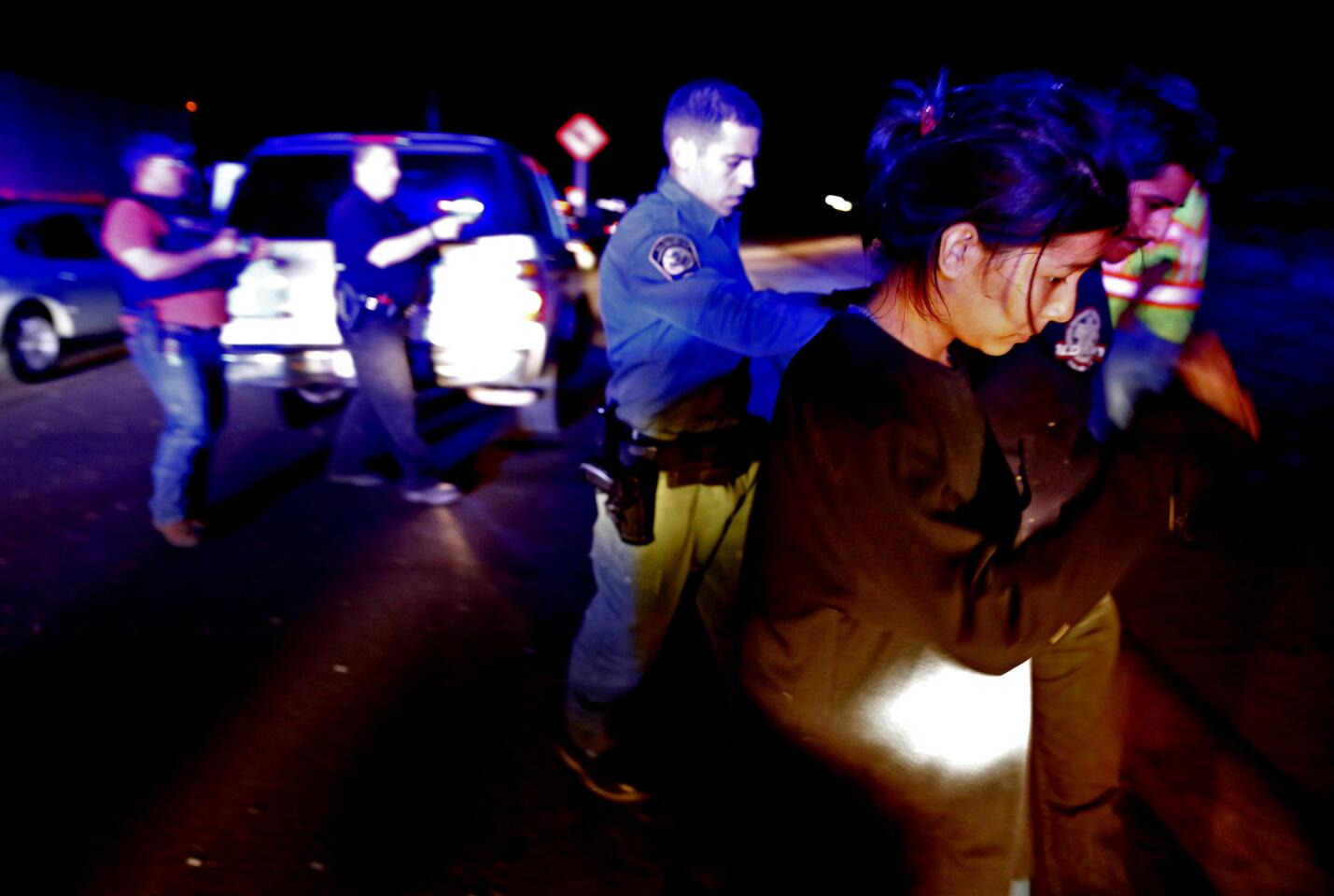
Brooks County sheriff’s deputies and U.S. Border Patrol agents arrest some of the 12 people found in a Ford Taurus after it was stopped along Highway 281. A smuggler’s tally sheet found in the car noted that he charged as much as $3,500 per person for the ride. The highway is a major smuggling route into the U.S. (Don Bartletti / Los Angeles Times)
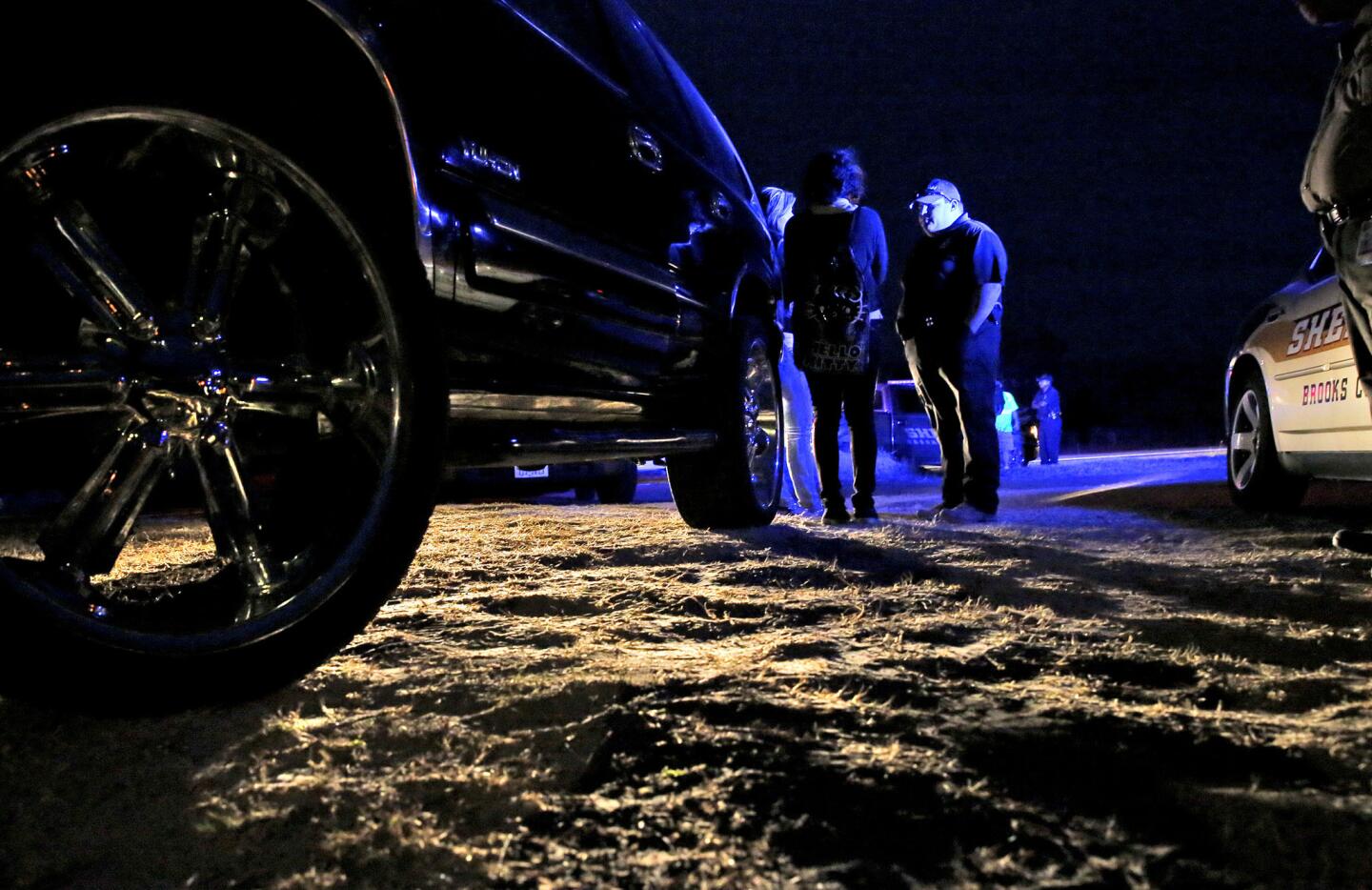
Deputies question a woman who had been driving a Chevy Yukon that they determined bore counterfeit Texas license plates and no registration or insurance. She was suspected of cruising the back roads of Falfurrias, Texas, as a scout for Mexican smugglers. (Don Bartletti / Los Angeles Times)
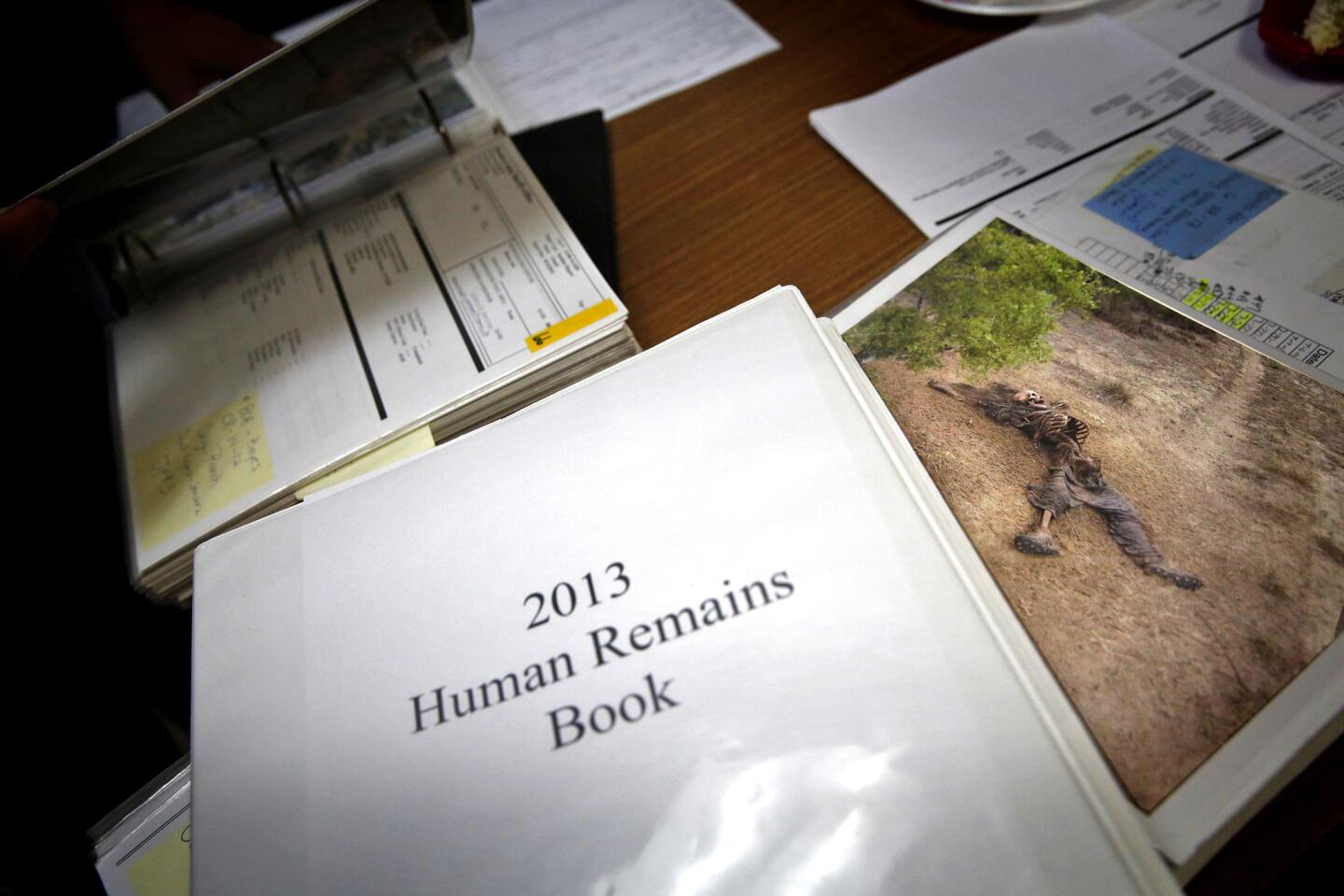
Binders at the Brooks County Sheriff’s Department document the details about bodies found on sprawling ranches near Falfurrias, Texas. In 2012, 129 bodies were recovered in the region. So far this year, 31 have been found. (Don Bartletti / Los Angeles Times)
Advertisement
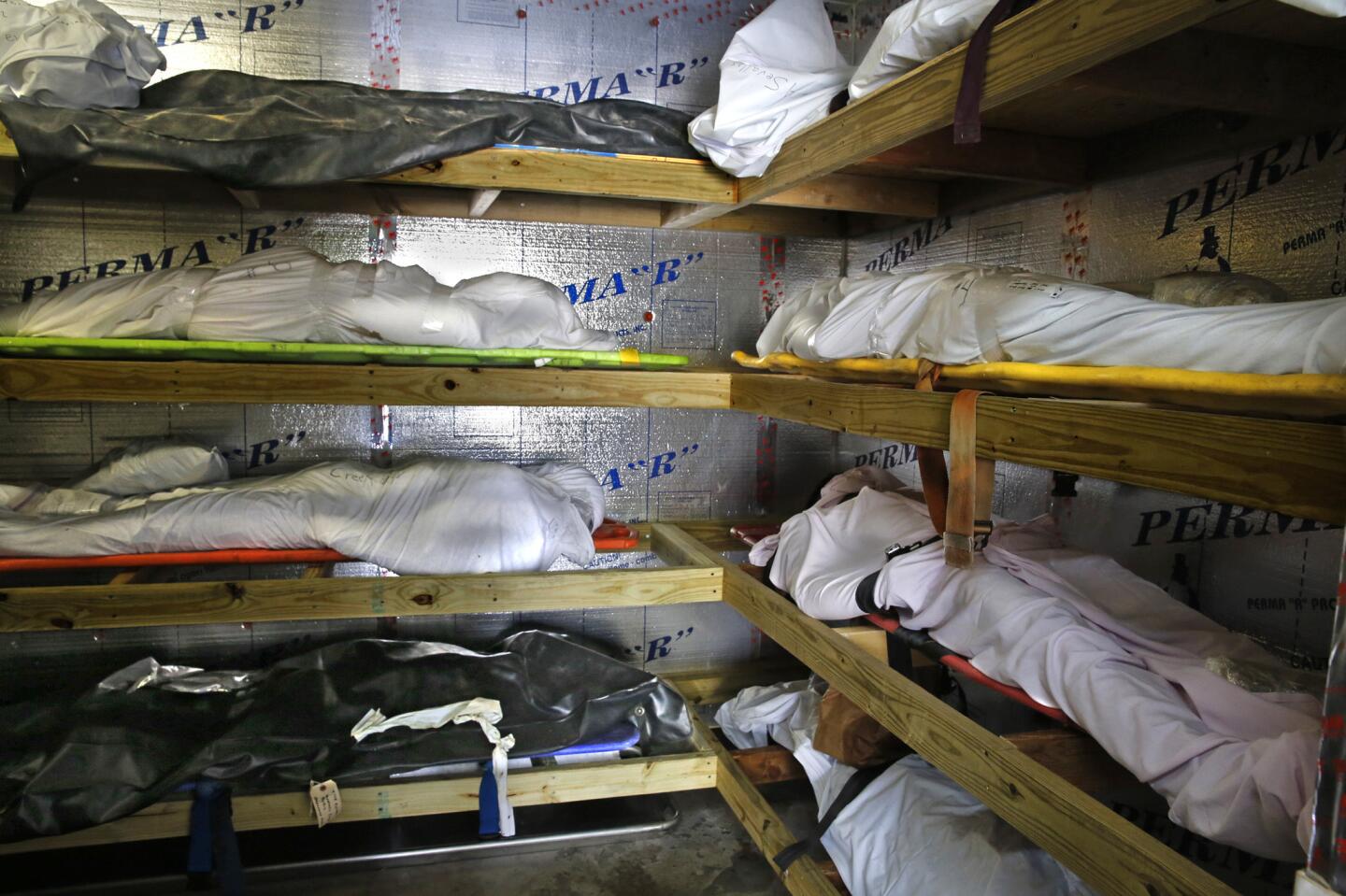
The bodies of unidentified and unclaimed migrants who died in the smuggling corridor around Falfurrias, Texas, lie in a freezer at the Elizondo Mortuary in Mission, Texas. Bodies that remain unidentified or unclaimed after a few months are buried at Sacred Heart Cemetery in Falfurrias. (Don Bartletti / Los Angeles Times)
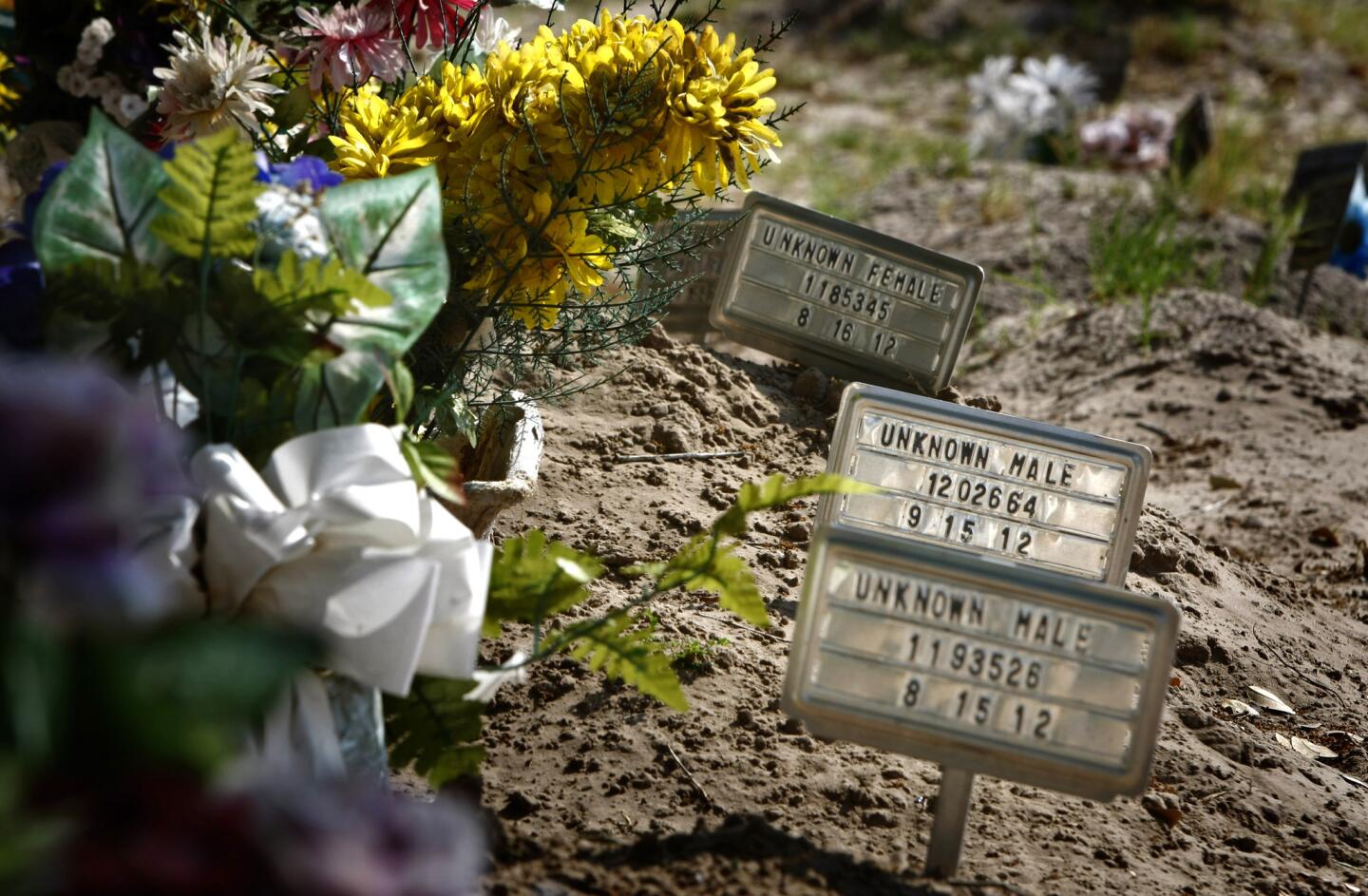
Five-by-7-inch aluminum signs and artificial flowers mark the graves of migrants buried in Sacred Heart Cemetery. It’s the final resting place for the unidentified or unclaimed bodies of migrants who die trying to avoid a border checkpoint by walking through the unforgiving terrain of South Texas. (Don Bartletti / Los Angeles Times)
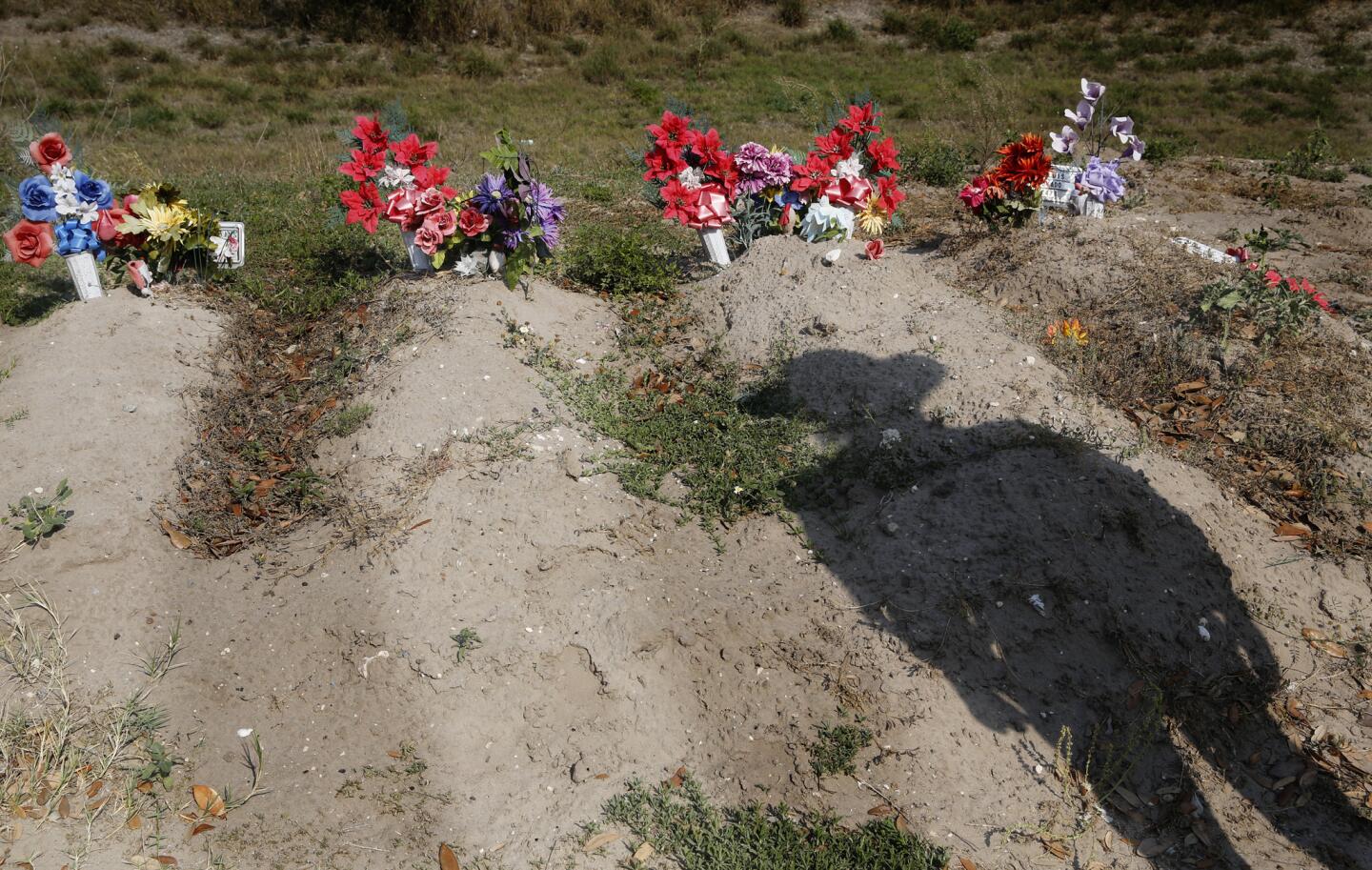
The shadow of Chief Deputy Urbino Martinez appears to gaze at the graves of some unidentified or unclaimed border crossers buried in Falfurrias’ Sacred Heart Cemetery. The region’s harsh countryside has become one of the most dangerous areas for those trying to get into the U.S. illegally from south of the border. (Don Bartletti / Los Angeles Times)







